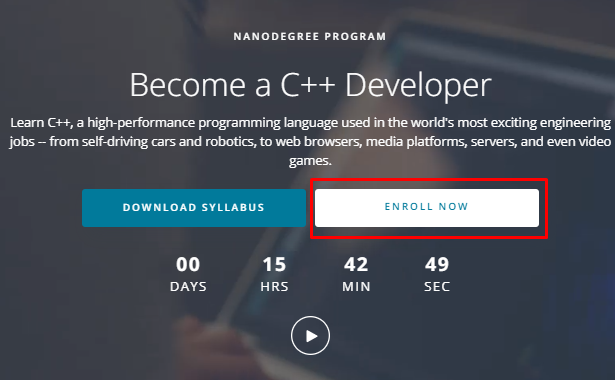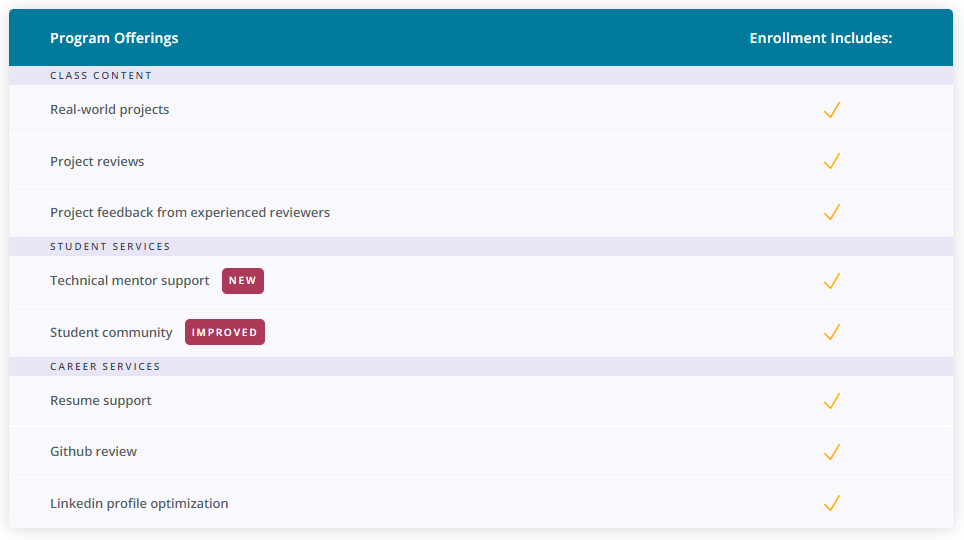When you make the decision to learn online, you want to pick a renowned online learning platform, but many would put both Coursera and Udacity in this box.
Both platforms offer a wide range of courses and partner with recognized organizations, colleges, and universities, but this doesn’t mean they’re both right for you.
To help you decide which of these eLearning sites will help grow your career and skillsets, we’ve taken a detailed look at Coursera vs Udacity, bringing you the most important information you need.
Table of Contents
Coursera vs Udacity: An Quick Summary
If you are interested in mastering tech-related topics and don’t want to dedicate more than 6 months to an online course, Udacity’s Nanodegrees are an ideal option. You should also budget on a fee of around $399 per month for a course like this.
Coursera also has a strong focus on tech skills, but there are a lot of other options too, including health, personal development, social sciences, and art. Along with the wider selection of courses, you also won’t pay as much per course. Prices range between $39 and $99.
Coursera vs Udacity: General Take
Coursera
Coursera is a brand that’s recognized across the globe. It’s generally also one of the first platforms to pop up as you begin your search for an online course.

Coursera has a strong focus on data, technology, and programming courses, but there are other categories such as personal development, health, and arts to choose from.
The site has collaborated with top universities and colleges to bring learners thousands of accredited courses – just one of the reasons why they stand out.
Udacity
Udacity is specifically for those who want to hone their digital and tech skills. From data analysis and cloud computing to artificial intelligence and programming, Udacity has one of the widest selection of IT-related courses and qualifications.

While Udacity courses are not accredited, they are created by some of today’s leading experts, which means you are learning from the best in the business. Even the founders themselves have backgrounds in technology and programming.
Winner: Coursera for a wider selection of accredited courses.
Coursera vs Udacity: Who Is It For?
Coursera
Coursera caters to a wide variety of learners of every level. This ranges from high school graduates to industry experts looking to expand their credentials.
Since the more advanced courses have a rigorous application process and are relatively expensive, Coursera is also a great fit for more advanced learners seeking high-paying job opportunities and contracts in top organizations.
Udacity
Udacity helps people bridge their skills gap quickly with the help of in-depth short courses. The platform caters to professionals in the technology and programming sectors specifically.
Since Udacity courses are not accredited, they’re a better fit for those who have existing skills and experience and would like to upskill in order to enhance their careers.
Winner: Tie as it depends on your specific career and learning goals.
Coursera vs Udacity: Types of Courses Offered
Coursera
Coursera offers over 8,400 courses, ranging from guided projects to master’s degrees. Learners have the option to choose between 5 different programs, including:
- Guided projects: These are small interactive programs that you can complete in less than two hours to sharpen your existing skills.
- Courses: Courses include recorded lectures, community discussion forums, and auto-graded and peer-reviewed assignments.
- Specializations: Coursera specializations help learners master a specific skill through a suite of courses and practical projects.
- Professional certificates: These rigorous programs help learners become job-ready in the quickest way possible.
- MasterTrack™ certificates: These proprietary programs allow learners to study for industry skill packages that form part of different master’s programs offered on Coursera.
- Degrees: These are fully-fledged degrees offered in partnership with recognized universities and organizations.

Coursera courses are divided into the following categories:
- Data Science
- Business
- Computer Science
- Information Technology
- Language Learning
- Health
- Personal Development
- Physical Science and Engineering
- Social Sciences
- Arts and Humanities
- Math and Logic
Each of these categories contains dozens of individual courses and programs.
Coursera also has offerings for enterprises and government institutions, allowing them to collectively sponsor and train their employees. Coursera will even help these institutions improve the quality of their workforce by continually evaluating employee skill levels after the completion of each course.

Udacity
Udacity’s courses are packaged into programs called Nanodegrees. A Nanodegree is essentially a program that contains a number of skills that are taught through a series of lectures, projects, and tests. Once you have undertaken all the assigned material, Udacity awards you with a certificate.
Udacity’s programs are categorized into nine fields:
- Artificial Intelligence
- Autonomous Systems
- Business
- Cloud Computing
- Cybersecurity
- Data Science
- Programming and Development
- Product Management
- Career

Each of these categories contains a number of individual courses and Nanodegree programs. Unlike Coursera, Udacity does not have degree programs as it is not an accredited institution.
Similar to Coursera, Udacity has programs that are aimed at organizations and government institutions. The site customizes courses for a specific organization by identifying areas where skills are lacking and then training employees in those areas.

Winner: Coursera for its wider variety of course topics and qualification options.
Coursera vs Udacity: Pricing & Refunds
Coursera
The cost of certificate courses on Coursera depends on the technicality and length of the course. Most guided projects cost $9.99, while the price range is $39 to $99 per month for professional certificates and $2000 to $5,000 for MasterTrack certificates. In addition, they give you a free 7-day trial period for most certificate courses. For a full degree education on Coursera, you will part with between $9,000 and $40,000.
This might seem high but these prices are significantly lower than what you would pay for this degree at an accredited college or university. The platform also offers hundreds of free courses.
Coursera’s cancellation and refund policy allows you to cancel your subscription at any time but you won’t get a refund if the current month’s cycle has already been remitted. For specializations, you are eligible for a full refund if you cancel within two weeks of subscribing. For degree courses and guided projects, there are no refunds.
Udacity
Udacity courses typically cost between $700 and $2000 depending on the course and length of the program. If you are new to the platform, you are entitled to a range of attractive discounts of up to 75%. The payment plans are flexible, with learners having the option to either pay in full or monthly. In addition, the site has more than 200 free courses that you can take advantage of.
Udacity allows you to cancel and request a full refund within the first 2 days of your first subscription. If you re-enroll in a program that you previously canceled, you will not be eligible for another cancellation.
In 2016, Udacity ran an interesting program called Nanodegree Plus, which guaranteed money back if a graduate failed to get a job within 6 months. However, this offering was discontinued in 2018.
Winner: Coursera for catering to every online learning budget.
Coursera vs Udacity: Enrolment & Usability
Coursera
Signing up and learning on Coursera is a straightforward process thanks to the platform’s user-friendly interface. Simply click on the Join for Free button in the upper right-hand corner to create an account on Coursera. To sign up, you only need an email address and password.

You can view the entire catalog of courses by hovering the mouse over the Explore button in the upper left corner. This will give you a drop-down menu with all the course categories. Hovering over each category shows you the respective courses in that category, which you can click on to get more details.

Over and above the smooth navigation on the site, enrolling for a course on Coursera is relatively easy too. Most specializations and certificates only require you to pay the applicable fee to immediately gain access to the course material. For MasterTrack Certificates and degrees, you are required to apply to the affiliate school that offers the program.
Udacity
Creating an account on Udacity is just as easy; you will only need to provide your names (these can be automatically populated from your email or Facebook account), an email, and a password.

Once logged in, the page navigation is easy to master. By clicking on the Programs tab in the upper left corner, learners can access all the different course categories. Hovering over the category of your choice from the dropdown menu takes you to a page where you can view the individual programs.
The Udacity enrollment process is simple too. Once you decide on a course, click on the Enroll Now button to see more information, including the course duration, cost, and syllabus.

Learners only need to pay and confirm their subscription to be admitted to the program immediately. This is the case for beginner and most intermediate courses. For advanced programs, you usually need to demonstrate your knowledge on a particular topic first. This is done through a series of questions. However, this is purely for advisory purposes and it is up to you to decide whether to proceed with the course or not.
Winner: Udacity for keeping all course applications on their site.
Coursera vs Udacity: Course Structures
Coursera
With most specializations and certificate programs on Coursera, you can choose your own learning pace. Certificate courses typically include weekly reading lists, instructional videos, quizzes, and practice exercises. This varies depending on the number of modules covered each week. Learners can receive a verified certificate from Coursera at an extra fee of $49 once they have completed all the required material and assessments.

For degree programs, learners have to follow the calendar of the facilitating university, which generally spans 3 and 6 years. Upon completion, you will receive a degree from the university just as the regular graduates do.
Udacity
Udacity curates its learning content into different levels (beginner, intermediate and advanced) based on the learner’s existing skills. As mentioned before, Udacity offers Nanodegree programs which consist of a collection of relevant courses.

Learners can also choose to undertake a single course from a Nanodegree kit but they will not be eligible for certification. The instruction mode on Udacity includes a combination of pre-recorded video lectures, weekly quizzes, homework, and practical projects. The exercises are assessed by dedicated reviewers within 3 hours.
Winner: Tie. Both platforms offer engaging course structures.
Coursera vs Udacity: The Verdict
Now that we have looked at the most important aspects of the two platforms, is Coursera or Udacity better?
Coursera evidently has a more expansive offering than Udacity but that does not crown Coursera the winner. Each of these platforms has small differences designed to appeal to different target audiences.
Because Coursera offers accredited courses, their programs hold a slight edge in terms of desirability by employers. However, Udacity courses are also highly job-relevant especially in an increasingly digital world.
The prices on the two sites are somewhat similar particularly for shorter courses, but Coursera does offer more courses at a lower price. Both sites also offer free courses, with Coursera trumping Udacity in terms of the number of free courses.
So, which of the two platforms comes out on top?
The answer depends on your requirements. If you are looking to enter a new sector or the workforce in general, an accredited course from Coursera is recommended. If you simply want to upskill and enhance your career, either platform is ideal.
